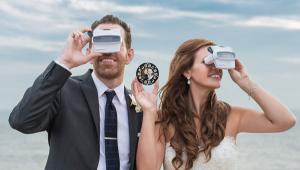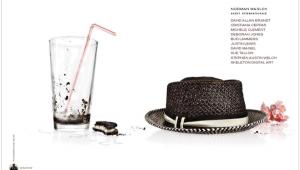“Helping Clients Hire You” A Sales Strategy For Photographers
One of my favorite workshop topics is "sales strategies" and that's probably because I have not met many people who got into photography to become salespeople. When I give this workshop at photographic conferences and association chapters I am always impressed by the number of questions and concerns photographers have about selling. Without a rep, selling yourself is often difficult. Even though my presentation changes every time I give a workshop, there are some rules of selling photography that have remained consistent throughout the years.
It's Never About You
My first and best rule is to stop thinking of this as sales and start thinking
of this as "helping clients hire you." It may sound like a silly
or small distinction, but for you, and your potential clients, it can be huge.
Wouldn't you rather help people than sell to them? I know clients would
rather be helped than sold to! Hiring you is not always about you; it is more
often about the services you are providing. With a little attitude adjustment
you can make a big difference in your business and marketing. You can set up
a win-win situation instead of the more potentially aggressive "cold call."
Decide On Your Goal
What is your goal for this phone call or e-mail? How do you want potential clients
to respond? Maybe you want them to visit your website. Perhaps you want to make
an appointment to show your portfolio. Maybe they can get some promotional material
in the mail from you. Before you call any client, know what you want and learn
everything you can about your client's needs for photographic services.
The Phone Calls
Sales calls have kept more people out of the photographic business
than any lack of talent. There is no lack of talent among you, but learning
to make successful one-on-one contact with clients seems to be overlooked when
learning photography.
I recommend writing "scripts." Scripting is a selling technique
I teach to close the gap between you and your goal of selling your work. It
is not a new sales tool. What is new is applying the technique to photographic
services.
Basically, scripting is talking to clients by preparing ahead of time because
you want to make the best use of your time and their attention, to get more
information about their photographic needs and to get the best chance to get
your work in front of them. It is writing down the expected interaction between
you and your client. Once you write the basic script, you can adapt to any situation
from advertising photo shoots to weddings to print sales.
You may feel you know what to say--after all you are the photographer--but
writing everything down beforehand will make each client contact more successful.
It will seem awkward or odd at first. Once you start working with your scripts,
you will wonder how you got along without them before!
You need to do thorough preparation, just as you would prepare before going
out on any photo shoot. Start by writing down the conversation from "hello"
and write it just as you would like it to go. Be sure to plan for all variations.
No matter what the client's response, you have anticipated an appropriate
reply.
Ask Open Questions
First learn how to use open-ended questions in your scripts. These are questions
that begin with "how, who, what, when, where, and why," instead
of closed questions that begin with "can you, could you, would you, do
you." See the next rule for examples. Open-ended questions encourage your
client to consider what you are saying--to take a moment to think--instead
of automatically replying with a "no." Open-ended questions help
you to gather information, save time, and reduce the rejection that comes with
the "no" you often get when you ask a closed question.
Be Specific About Your Photography
Start with a brief and specific description of your services based on your targeted
market. For example, "Hello, I am a nature and landscape photographer
and my name is so and so. I am interested in presenting our portfolio for your
corporate photo collection. When would be a good time to come by?"
The first critical phrase is "nature and landscape" because this
helps the client you are calling to visualize your work and they can then more
accurately identify their interest in seeing your portfolio. It is much more
accurate than if you had simply said, "I am a photographer." The
second vital phrase in this script is, "When would be a good time to come
by?"
Too often photographers use the phrases "can I come by" or "is
this a good time" and these closed-question phrases lead to pretty immediate
rejection. Asking a more open-ended question gives you more options in terms
of reducing rejection and having a conversation.
















































